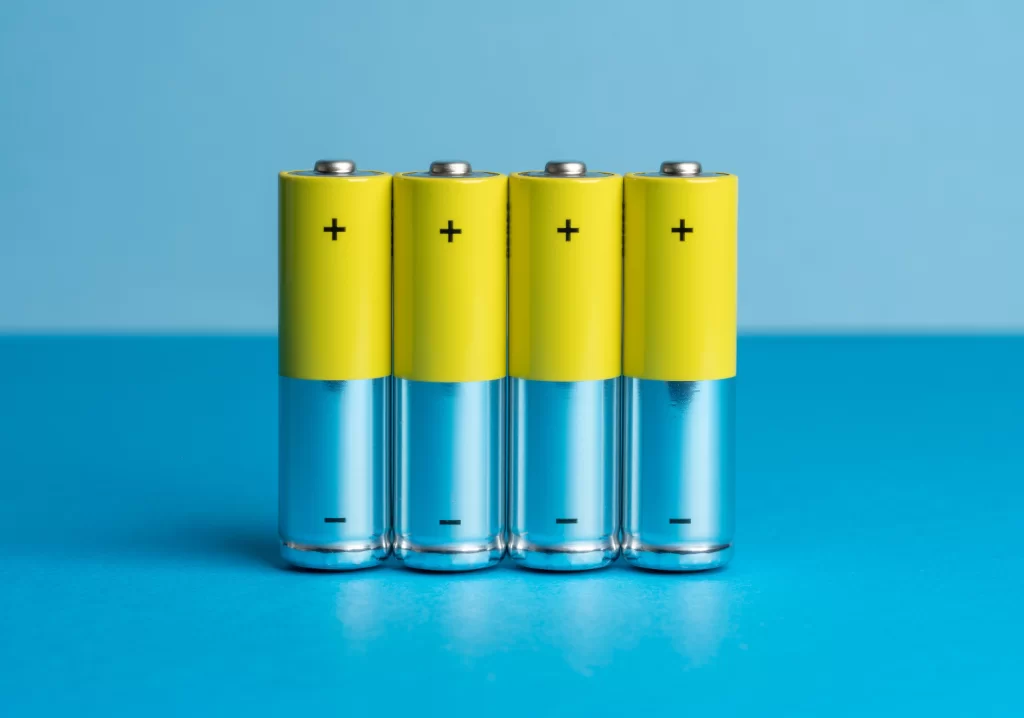As battery innovation increases, the mix of battery chemistries used in new technology will continue to evolve. These five graphs describe how demand is shifting, why mineral demand will reduce after it peaks, and how to close the battery loop.
Key points:
- As battery demand grows, energy density should continue rising, with more energy stored in fewer kilograms.
- However, chemistry change, density improvement and recycling could lead to a reduction in mineral demand by 2030.
- Up to 95 per cent of the components found in lithium-ion batteries can either be recovered or used in new batteries.
Battery sales surpassed 1 TWh in 2023 and are projected to reach 12 TWh by 2050. But with this heightened demand comes an increased need for the minerals used in battery components.
This poses numerous challenges, including: supply chain vulnerability; environmental concerns including water pollution, deforestation, land degradation, and resource depletion; and ethical concerns around labour practices in countries such as the Democratic Republic of Congo, where 90 per cent of the world’s cobalt is produced.
Despite the surge in battery demand, a report by the Rocky Mountain Institute estimates that efficiency, innovation and circularity could lead mined mineral demand to culminate within a decade, potentially eliminating the need for new mineral extraction by 2050 – facilitating a shift from a linear extraction model to a circular economy.
Solutions to the battery mineral challenge
Looking at the energy transition as a materials transition, demand will reduce for some materials and scale up for others as technology and efficiencies improve.
Demand and innovation is shifting battery mineral demand
Three of these solutions have already significantly reduced battery mineral demand. With battery sales spanning new applications and sectors and ongoing innovation, the chemistry will continue to evolve.
As battery innovation continues and sales scale to new applications and sectors, the mix of battery chemistries used in new technology will change.
Given that different chemistries use varying amounts of minerals, altering the chemistry mix will impact mineral demand. For example, switching to lithium iron phosphate (LFP) eliminates the need for nickel and cobalt, replacing these minerals with iron and phosphorus.
Within the next 10 years, new chemistries are expected to be developed, which will further change battery mineral demand. Different chemistries are also being tailored for specific costs and use cases; for example, lower-cost electric cars favour cheaper LFP batteries, with technology and cost improvements doubling its projected share in commercial vehicle batteries from around 40 per cent to around 80 per cent. As a result, nickel demand reduced by 25-35 per cent.
Innovation is also leading to an increase in battery energy density, fuelled by increased sales. When cumulative battery demand doubles, the average energy density of lithium-ion battery (LIB) cells (kWh/kg) has increased by around six per cent. Therefore, as battery demand grows, energy density should continue rising, with more energy stored in fewer kilograms.
Battery recycling is another area that has experienced continued growth. In 2019, the global LIB recycling rate was 59 per cent. But only 10 per cent of LIB waste in Australia was recycled in 2021.
But given LIB batteries are mineral-rich, up to 95 per cent of their components can either be recovered or used in new batteries.
Currently, most battery recycling uses pyrometallurgical processes (high-temperature recovery). Newer hydrometallurgical processes, which use chemical solutions, are more economically viable and growing in prominence.
Mineral demand will reduce after it peaks
A combination of the three current trends – chemistry change, density improvement and recycling – could lead to a reduction in mineral demand by 2030, including lithium, nickel and cobalt.
Peaks in net demand are expected to occur for lithium in 2038, nickel in 2034 and cobalt in 2028 – within a single battery lifetime.
After demand for battery minerals peaks, net mineral demand will begin to reduce as recycled materials eclipse gross battery mineral demand, although this may take some time to materialise.
But the sooner more solutions are deployed, the faster mineral demand will peak yet at a lower level.
Yet once annual battery demand reaches its maximum, recycling system losses can be counterbalanced by reduced battery mineral demand due to efficiency improvements.
A race to close the battery loop
Should acceleration of these trends continue, most mineral demand can be met with recycled end-of-life battery materials by mid-2040.
A global shift from raw mineral mining to battery recycling, major battery demand areas will attract recycling innovation and capacity, eventually becoming supply hubs.
Should a circular battery system be achieved, energy independence may not be far off.
Most (80 per cent) of countries are net oil importers, with this importation need to power daily operations posing an ongoing economic risk.
A circular technology system where materials are recycled domestically also reduces replacement risks.
Some countries have come to recognise battery recycling as a tool to provide energy security, including China – which is also on track to reach zero mineral mining demand by 2042.
As the race continues, investing in efficiency innovation and comprehensive recycling systems will be crucial to achieving a sustainable and independent energy future.
